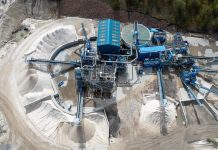Volvo CE has already surpassed its 2020 energy saving target as part of a global commitment with the World Wide Fund for Nature (WWF).
More than two years ahead of schedule, Volvo CE has achieved its end of 2020 WWF Climate Savers commitment, aimed at reducing the amount of energy the company produces in its plants. The company had originally planned an ambitious target to save 40 gigawatt hours (GWh) across its factories from 2014 to 2020. But in fact, employees have already saved a total of 44 GWh – enough energy to power almost 1,500 houses for an entire year. Johan Wollin, Global Director for Energy Management, at Volvo CE, says: “It was an ambitious target, but we were confident we could achieve it. This represents a significant improvement in production site energy efficiency and has also helped to reduce our energy bill by 10 million SEK each year. If we add the non-energy benefits the accumulated savings over the last five years have contributed with more than 100 million SEK in cost savings.”
SHARING BEST PRACTICE
Volvo CE has achieved its target thanks to a determined effort across its global manufacturing facilities.
In Pederneiras, one of Volvo CE’s primary production hubs for Latin America, everyone is fully behind the initiative. Volvo CE Safety Engineer Cláudia Rocha, says: “This is important because without their support, it would be hard to implement things such as skylights for daylight harvesting. It’s not just management, though – every employee has a role to play in cutting down on energy use. We are encouraged to submit improvements and keep an eye on actions relating to sustainability.”
Meanwhile, with more than 300 pieces of large production equipment and 110,000 m2 of floor space, reducing energy usage in Volvo CE’s plant in Eskilstuna, Sweden, isn’t easy. “By being more conscious of idle electricity, and making small changes to everyday behaviors, we’ve managed to save more than 10 GWh,” explains Boris Radojcic, Energy Leader, at Volvo CE. “All of the improvements we’ve made so far have been achieved with either no investment or a very small one.”
REDUCED ENERGY = REDUCED COST
While this achievement will inevitably reduce the company’s wider environmental impact, there are also other added benefits.
Birgitta Sjögren, Project Manager from the IVL Swedish Environmental Research Institute, says: “The most obvious benefit is the cost reduction associated with using less energy. Volvo CE has managed to achieve something positive for the environment. In addition to this, working with energy efficiency has brought about many non-energy benefits, which have helped to improve safety, quality, and productivity. Lastly, by making continuous improvements in the area of energy management, we are also training the organization to work with continuous improvements in all other areas. The energy use of a plant tells you a lot about its overall level of operational excellence and we can see potential for future improvements.”
“Starting this year, all plants have been challenged to continue the improvement rate of 2% energy reduction per year by 2023,” concludes Johan. “We are also being more ambitious with regards to idle electricity by revising the current 15% target down to 12% in 2020 and then further to 10% in 2022. Today, we have at least three plants that are already below 10% such as Changwon, Pederneiras, and Bangalore. Together, we will continue to participate in energy saving activities and, ultimately, help Volvo CE to achieve its mission to become the world leader in sustainable transport solutions.”








